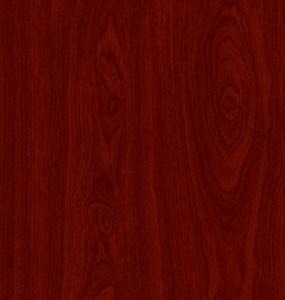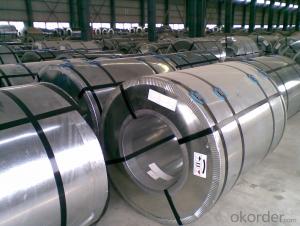Pre-painted Galvanized Steel Coil-Wooden Pattern1
- Loading Port:
- Shanghai
- Payment Terms:
- TT OR LC
- Min Order Qty:
- -
- Supply Capability:
- 4000吨 m.t./month
OKorder Service Pledge
OKorder Financial Service
You Might Also Like
Pre-painted Galvanized Steel Coils/ PPGI/GI
I Specifications:
1.Thickness:0.16-2.0mm
2.Width:600-1500mm
3.Material: SGCC,SGCD,SECC,SECD,DX51D+Z
4.Zinc coating:40-275G/M2
5.Surface Structure: galvanized ,zero spangle, regular spangle or normal spangle
6.Surface treatment: chromated and oiled, chromated and non-oiled
7.Color:all RAL series
II Main characteristics :
1.strong corrosion resistance
2.surface quality
3.conducive to deep processing,such as the embossed PPGI,printed PPGI&punching PPGI
4.economy and practicality
III Applications:
Household Appliance:
1.Refrigerator shutter &side panels, Washer, Freezers, Air conditions,
2.Rice Cooker, Microwave Ovens, Water Heaters, Sterilization Cabinets, Range Hoods
3.Computer Panels , DVD/DVB panels, TV back panel etc.
Teaching Board: whiteboard, blackboard, green board(chalk board).
Indoor Decoration: Fireproof Door, kitchen cabinet, wall decoration.
Shipping Industries: Ship, Fecht, Marine.
Elevator/Medical Equipment/Rubbish Bin.
Thickness:0.17mm-0.8mm
Width:600mm-1250mm
Prepainted Galvanized Steel Coil
- Q: How are steel coils used in the manufacturing of telecommunications equipment?
- Steel coils are used in the manufacturing of telecommunications equipment as they are commonly used as a raw material for various components, such as enclosures, cabinets, and brackets. The coils are processed and shaped to create the necessary parts that provide structural support, protection, and stability to the telecommunications equipment.
- Q: How do steel coils contribute to sustainable construction?
- Steel coils contribute to sustainable construction in several ways. Firstly, steel is a highly durable and long-lasting material, which means that structures made from steel coils have a longer lifespan and require less maintenance and replacement over time. This reduces the amount of waste generated and resources consumed in the construction industry. Additionally, steel is a recyclable material, so steel coils can be easily recycled and reused, reducing the demand for new steel production and minimizing the environmental impact. Steel is also a lightweight material, which allows for more efficient transportation and installation, reducing energy consumption and greenhouse gas emissions. Finally, steel coils offer excellent structural strength, enabling the design of more sustainable and energy-efficient buildings with reduced material usage, increased energy efficiency, and improved safety. Overall, steel coils play a crucial role in promoting sustainability in construction through their durability, recyclability, lightweight nature, and structural benefits.
- Q: Hello, Do I make any damage to my stainless steel sink by cleaning it with clorox? Thank you!
- I think not. I owned stainless steel sinks before that were they were in style. I used Clorox and more on them and they always turned out great. found wiping them out with a paper towel made them shine.
- Q: I want to know if Diamond is stronger than Steel.
- What Is Stronger Than Diamond
- Q: is cold roll or hot roll mill roller is cast steel? or cast iron?
- another name is Grey iron, come from groups of ferrous alloys
- Q: Can i use steel shot in a remington 870 wingmaster full choke 30 inch barrel. the shotgun is in great shape and about 20 or 25 years old probably. thank you. the steel shot i have got is 12 gauge 2 3/4 in 1550 velocity 1 1/16 oz 2 shot winchester xpert high velocity steel shot
- The biggest problem is the FULL choke on the end of the barrel. Steel pellets are harder than lead, so they find it hard to squeeze through the tight full choke. If you do it, you WILL either bulge or crack the muzzle end of the barrel. That is a fact. Newer model 870 shotguns with RemChokes can fire steel, but you have to use a lead MODIFIED choke to send a full pattern down range. Again, for the same reason I mentioned earlier - that the steel does not deform and squeeze itself through the tighter chokes as well. See photo link below at what your barrel will look like after a box of steel shot.
- Q: What is future prospect of these steel structures, are they really weather proof like everyone believes??
- Solid Steel Buildings, Inc. is an all encompassing Steel Building Solution provider.? Our methodology will provide you with a low cost steel building with the highest possible quality.
- Q: What are the different grades of steel used in coils?
- There are several different grades of steel used in coils, including low carbon steel, high carbon steel, stainless steel, and alloy steel. Each grade has its own unique properties and is used for specific applications based on factors such as strength, durability, corrosion resistance, and formability.
- Q: What are the pros and cons of non-stick and stainless steel pots and pans ?Thanks
- Non stick doesnt stick but after time the non stick doesnt stay non stick and then time to replace Stainless steel. some things may not stick but its best to put down a little pam, or cooking oil, and or aluminum foil
- Q: How are steel coils coated to prevent rust and corrosion?
- Steel coils are coated to prevent rust and corrosion through a process called galvanization. This involves immersing the coils in a bath of molten zinc, which forms a protective layer on the steel surface. This zinc coating acts as a barrier, preventing oxygen and moisture from reaching the steel and causing rust. Additionally, the zinc coating provides sacrificial protection, meaning that even if the steel is exposed due to scratches or abrasions, the zinc will corrode before the steel, further enhancing its longevity and resistance to rust and corrosion.
Send your message to us
Pre-painted Galvanized Steel Coil-Wooden Pattern1
- Loading Port:
- Shanghai
- Payment Terms:
- TT OR LC
- Min Order Qty:
- -
- Supply Capability:
- 4000吨 m.t./month
OKorder Service Pledge
OKorder Financial Service
Similar products
Hot products
Hot Searches
Related keywords




























